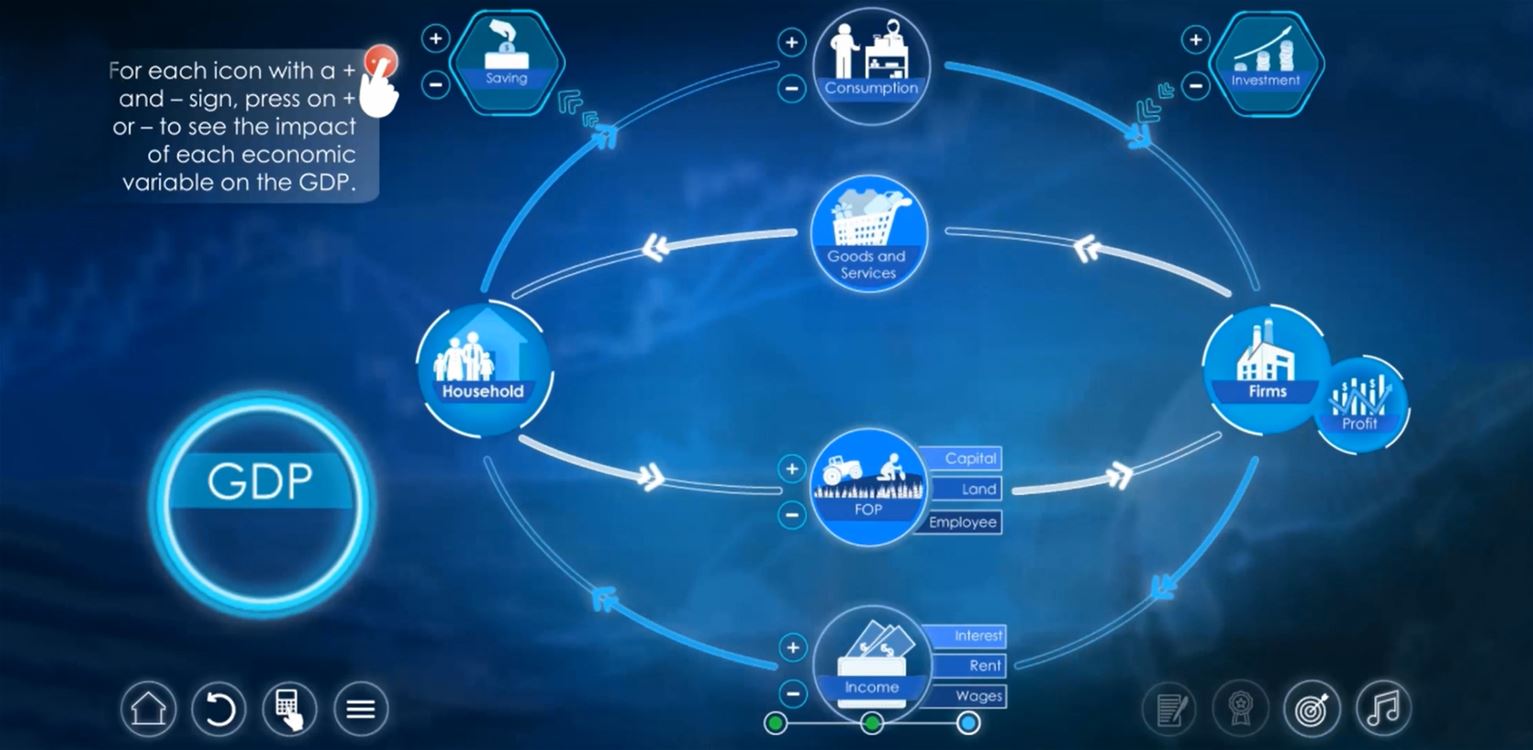
In a rapidly-changing world driven mainly by new technologies, SABIS® is continuously adapting and never becoming complacent by integrating educational technological innovations into the learning cycle in an effort to raise students' interest and engagement. The use of interactive simulations and virtual reality at SABIS® is a reflection of how SABIS® is working to stay ahead and ensure that our students have the knowledge and skills they need to succeed.
In technical terms, interactive simulation is the integration of 2D and 3D digital information in real-time in response to a user’s actions. Computer-generated enhancements are layered over static animations allowing students to interact with the simulation and ultimately make it more interesting and life-like.
Consider a lesson on economics and the flow of money within various economies. A regular animation, when played, may help students understand the circular flow in a closed, two-sector economy; how the GDP is calculated; and the difference between the factor market and the product market. Now, add an interactive layer to the animation! In an interactive simulation, students are able to engage with the animation and change economic inputs and variables to immediately see their effects. These interactive simulations allow students to interact, explore, and learn beyond what is possible in today's content delivery method.
Watch this video showing an interactive simulation of the flow of money within various economies:
The use of interactive simulation in education is a very exciting area that SABIS® is exploring and gradually integrating into its dynamic educational tools. “Interactive simulation is bringing a new dimension to the learning experience,” explained Charbel Madi PhD, Senior Research Analyst in the SABIS® Research & Development Department. “It allows students to control the virtual environment and analyze multiple outcomes. It creates an environment in which students are actively participating in their learning materials and are incentivized through simulation of real-life experiments.”
Virtual Reality (VR) is another new and exciting educational technology tool that is well recognized for its potential in education. VR is defined as a 3D artificial environment that is presented to the user in such a way that is real. Using a gear headset, graphical representations are presented in 3D and the system is designed to respond to head movements, allowing users to interact with the virtual world around them.
The possibilities for VR in the realm of education are endless. For example, VR laboratories for all types of STEAM topics allow students the opportunity to experience real-world laboratories and use equipment that may often be rare, dangerous, or prohibitively expensive for any school or university to offer!
Watch this video to experience DNA sequencing in a virtual reality lab:
VR also allows students to explore international locations and can be used to simulate different time periods. Students can model abstract concepts from the human muscular system, visit ancient Rome, take a trip in the Amazon rain forest, cruise down the Nile in circa 2600 B.C., and even roam with the dinosaurs!
Constantly improving and never being complacent is at the core of SABIS®, and with the introduction of all of these tools, SABIS® continues to position itself at the forefront of education.